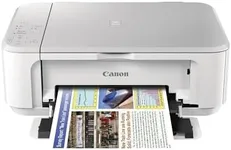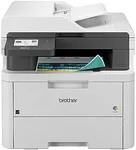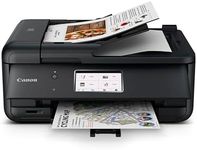Buying Guide for the Best Home Multifunction Printers
Choosing the right home multifunction printer can be a bit overwhelming given the variety of options available. A multifunction printer (MFP) combines several functions like printing, scanning, copying, and sometimes faxing into one device, making it a versatile tool for home use. To find the best fit for your needs, it's important to understand the key specifications and how they align with your specific requirements. Here are the main specs to consider and how to navigate them.Print Quality (Resolution)Print quality is measured in dots per inch (DPI). Higher DPI means better print quality, which is important if you need to print high-resolution photos or detailed documents. For general home use, a resolution of 600 x 600 DPI is usually sufficient. If you plan to print a lot of photos or high-quality graphics, look for a printer with at least 1200 x 1200 DPI.
Print SpeedPrint speed is measured in pages per minute (PPM). This spec indicates how fast the printer can produce pages. For occasional printing, a speed of 10-20 PPM is adequate. If you print frequently or in large volumes, consider a printer with a higher PPM, such as 20-30 PPM or more. Your need for speed will depend on how often and how much you print.
Connectivity OptionsConnectivity options determine how you can connect your devices to the printer. Common options include USB, Wi-Fi, and Ethernet. Wi-Fi connectivity is particularly useful for home use as it allows multiple devices to connect wirelessly. If you have a smart home setup, look for printers that support mobile printing and cloud services. Choose based on how you plan to connect and use the printer with your devices.
Paper HandlingPaper handling refers to the types and sizes of paper the printer can accommodate, as well as the capacity of the paper tray. For general home use, a printer that handles standard letter-size paper (8.5 x 11 inches) and has a tray capacity of 100-150 sheets is usually sufficient. If you need to print on different paper sizes or types, such as envelopes or photo paper, ensure the printer supports these options.
Scanner ResolutionScanner resolution is also measured in DPI and affects the quality of scanned images and documents. For basic document scanning, a resolution of 600 x 1200 DPI is adequate. If you need to scan photos or detailed images, look for a higher resolution, such as 1200 x 2400 DPI or more. Your choice should be guided by the type of scanning you expect to do most often.
Duplex PrintingDuplex printing allows the printer to print on both sides of the paper automatically. This feature is useful for saving paper and creating professional-looking documents. If you frequently print double-sided documents, look for a printer with automatic duplexing. If you only occasionally need this feature, manual duplexing (where you flip the paper yourself) might be sufficient.
Ink/Toner Cost and YieldThe cost and yield of ink or toner cartridges can significantly impact the overall cost of owning a printer. Yield refers to the number of pages a cartridge can print before needing replacement. High-yield cartridges are more cost-effective in the long run. Consider how much you print and look for printers with affordable and high-yield cartridge options to keep ongoing costs manageable.
Size and DesignThe size and design of the printer can affect where you can place it in your home. Compact printers are ideal for small spaces, while larger models may offer more features but require more room. Consider the space you have available and choose a printer that fits comfortably without compromising on the features you need.
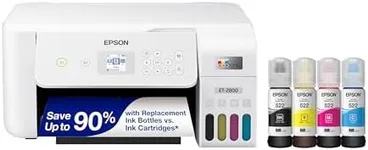

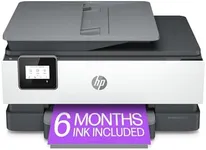

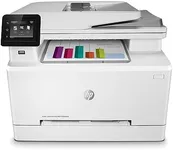
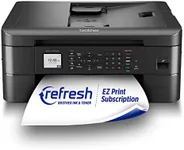
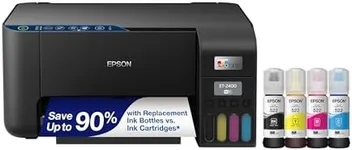

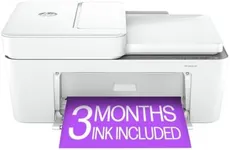



![Canon PIXMA TS6420a All-in-One Wireless Inkjet Printer [Print,Copy,Scan], Black, Works with Alexa](https://images-proxy.bestreviews.guide/cjKk-h1Fz8hBYDMNiYkvp-Hb1fc=/0x150/https://m.media-amazon.com/images/I/21-0hP0b2eL._AC_CX679_.jpg)
